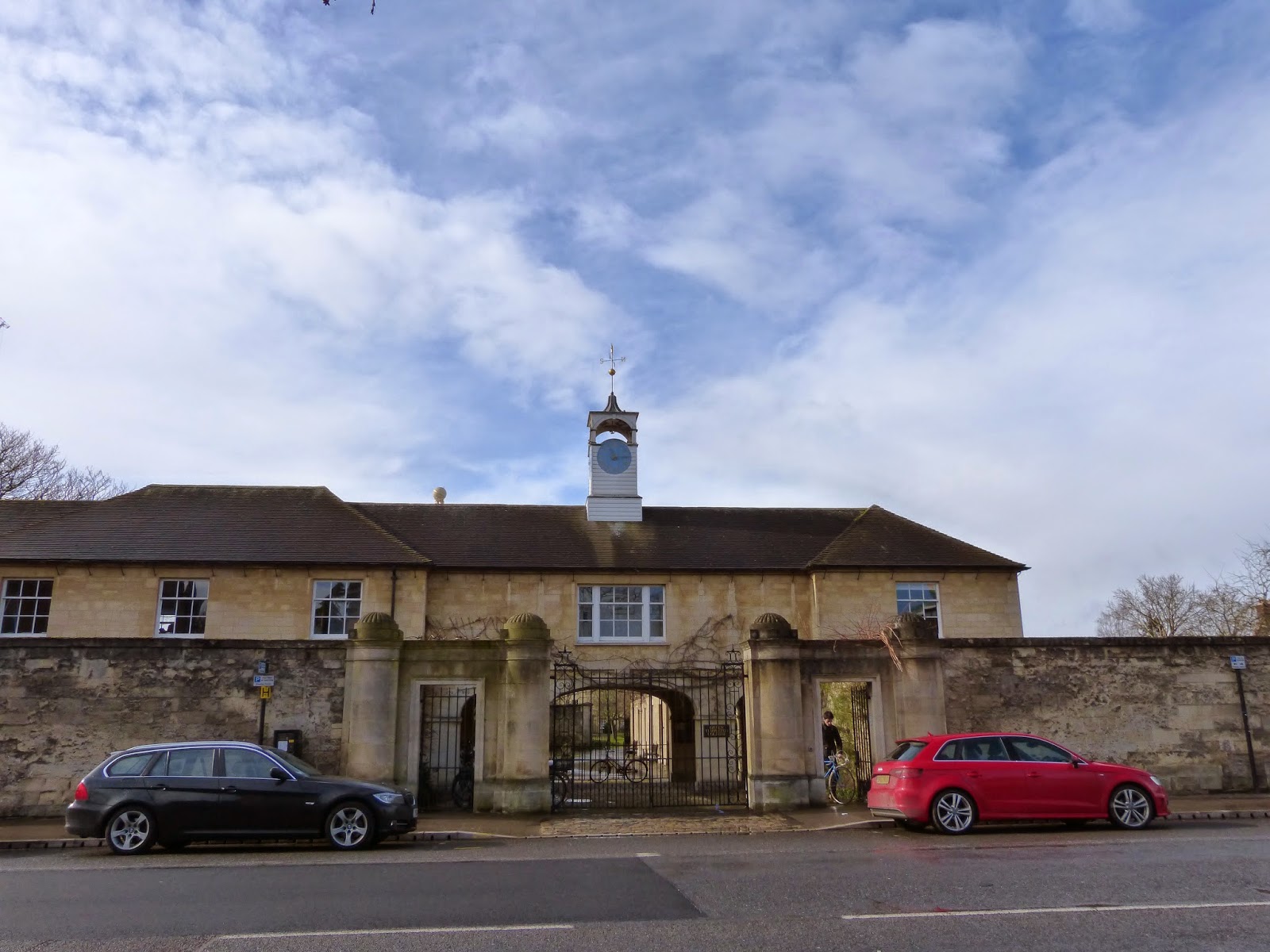But having said that, (a) this blog is not about urban design, and (b) when the sun came out Oxford was a very nice place to be.
So on to the clocks. This posting is split into this part which covers the university buildings, and the next two parts which will cover everything else.
Information on all of the colleges and other university buildings is easily available, so I won't say too much here.
Our first stop is at The Queen's College, founded in 1341.
The clock was made in 1880 by Gillett and Bland of Croydon (now Gillett and Johnston), and has been looked after by a gentleman called John Richards since 1975 (thanks to The Queen's College Newsletter Issue 20 for those facts).
On the opposite side of the High Street (aka The High) is University College.
St Mary's , also on The High, is not technically part of the university, but is generally considered to be the official university church.
Green Templeton College on Woodstock Road is a newcomer, formed by the merger of two educational institutions in 2008.
The clock tower is also deceptive, being added as recently as 1979.
Trinity College is on Broad Street.
Next door to Trinity is Balliol College, founded in 1263.
Christ Church College is the biggie in terms of grandeur, but is a relative newcomer, being founded as late as 1524.
The main entrance is Tom Tower. The bell rings 101 times (once for each of the original students, although could cash in these days by adopting a Dalmatian theme) at 9.05 pm each evening, originally as a signal for students to return to college before the gates were locked. Why 9.05 pm? Because this is actually 9 pm in Oxford time (before the arrival of the railways in the 19th century, everywhere kept its local time - see the earlier posting on Bristol).
The clock itself is by Joyce of Whitchurch and dates from 1889, later converted to electric motors by Smith of Derby.
The History Faculty in George Street is housed in what was, until 1966, the High School for Boys.
The Examination Schools in Merton Street are where all students sit their finals.
The clock has a certain similarity with that on the History Faculty building.
Onwards to Jesus College. The clock was installed in 1831. Reportedly the college tradition is that students aim a champagne cork at the clock after finishing their finals - hitting the clock means you will get a first. This wouldn't have worked at my university - it is difficult to throw the ring pull from a lager can very far.
Harris Manchester College has this new, multi-faceted clock tower on Mansfield Road.
The six dials, of 765 mm diameter, were manufactured by Smith of Derby. The rings are gilded with 23.5 carat English gold leaf.
In tune with the somewhat eccentric time keeping rituals of Oxford, the bell rings at two minutes past the hour.
And the tower has a rather nifty weather vane.
St Hughs College in St Margarets Road has two clocks. One is on the main building...
...and the other is further along the road on what I assume is student accommodation.
Finally, to St John's College.


































































































